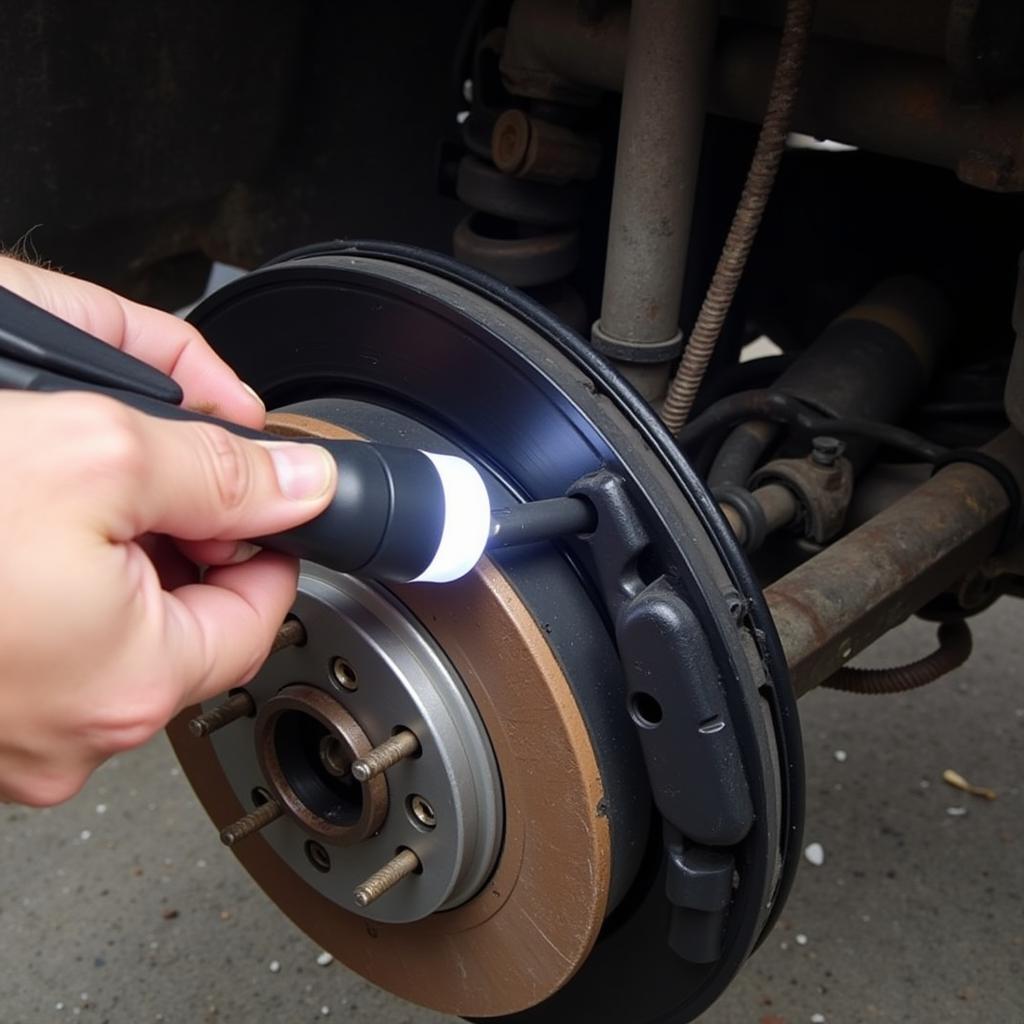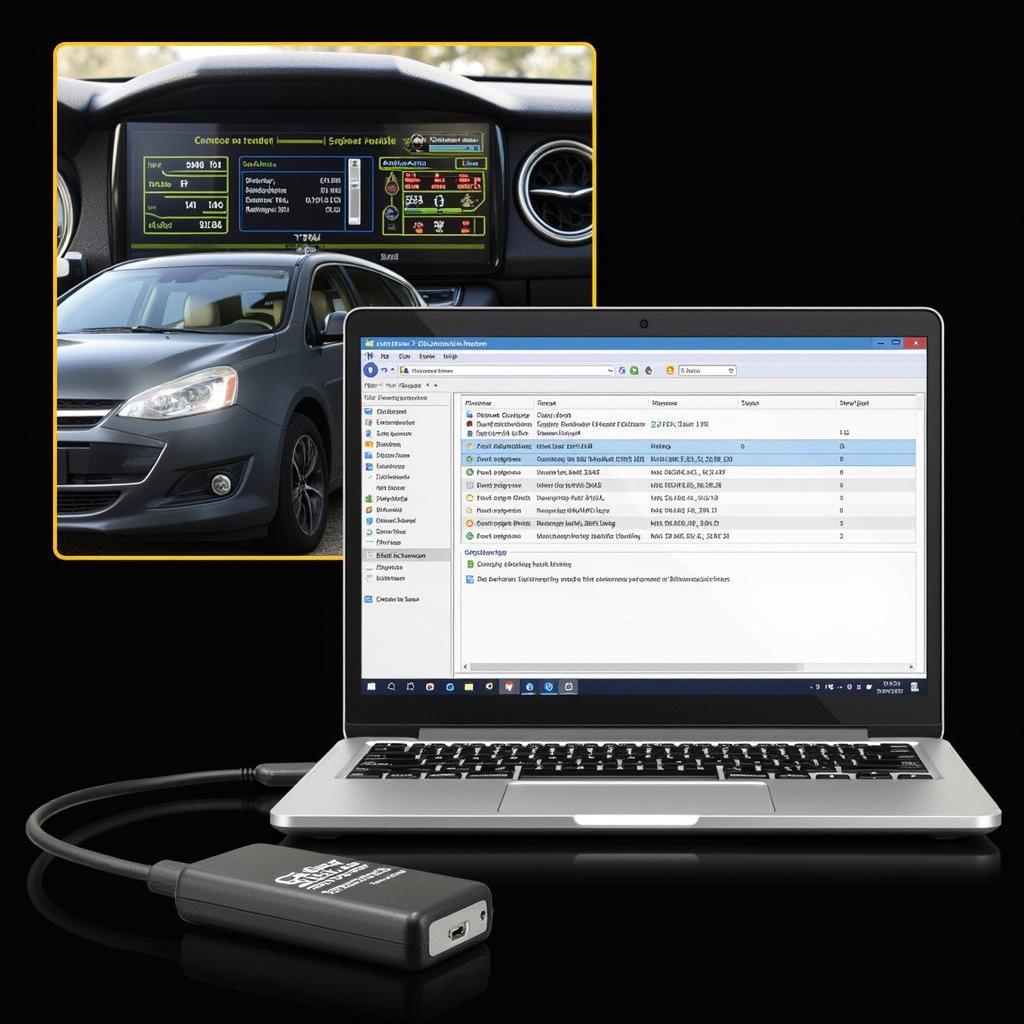The auxiliary brake warning light, a crucial indicator in many vehicles, can signal potential issues with your braking system. Ignoring this warning can lead to costly repairs or even dangerous driving situations. This article will explore the reasons behind an illuminated auxiliary brake warning light, diagnostic procedures, and solutions, empowering you to address this issue effectively.
If your auxiliary brake warning light is on, it’s essential to understand the possible causes. This light is distinct from your regular brake warning light and typically indicates a problem with your parking brake or a related system. Don’t panic, but don’t ignore it either. Prompt diagnosis is key. See our guide on a related issue: hyundai sonata hybrid system warning check brake.
What Triggers the Auxiliary Brake Warning Light?
The auxiliary brake system, often referred to as the parking brake, plays a vital role in preventing your vehicle from rolling when parked. Several factors can trigger the warning light. These include a low brake fluid level, a faulty parking brake switch, worn brake shoes or pads, or issues with the parking brake cable or actuator. In some vehicles, a malfunction within the electronic parking brake control module can also be the culprit.
Low Brake Fluid and the Auxiliary Brake Light
A common culprit for the auxiliary brake warning light is low brake fluid. This is because the parking brake often shares the same hydraulic system as the primary brakes. If the fluid level drops too low, it can trigger both warning lights.
Faulty Parking Brake Switch Diagnosis
A malfunctioning parking brake switch can also illuminate the auxiliary brake warning light, even if the parking brake is fully disengaged. This switch signals the vehicle’s computer about the parking brake’s status. A simple test with a multimeter can often confirm a faulty switch.
Troubleshooting the Auxiliary Brake Warning Light
Diagnosing the root cause of an illuminated auxiliary brake warning light involves a systematic approach. Start by checking the parking brake’s engagement. If it’s engaged, release it and see if the light goes off. Next, inspect the brake fluid level. If it’s low, top it off and monitor the light. If the problem persists, a more in-depth inspection of the parking brake system, including the switch, cable, and shoes or pads, is necessary.
You can find more information on related brake warning light issues at primary brake and aux brake warning lights on.
Inspecting the Parking Brake Cable and Components
A visual inspection of the parking brake cable and related components can reveal potential problems, such as frayed cables, seized mechanisms, or worn brake shoes. This step requires getting under the vehicle, so ensure it’s safely supported on jack stands.
 Inspecting the Parking Brake Cable and Components for Damage
Inspecting the Parking Brake Cable and Components for Damage
Remote Diagnostics and Software Solutions
Modern vehicles often rely on electronic systems to control the parking brake. In these cases, specialized diagnostic tools and software can be used to pinpoint the issue. Remote diagnostic services, offered by companies like Car Diag Tech, allow technicians to access your vehicle’s computer remotely, identify the problem, and even implement software updates or calibrations to resolve the issue.
For a specific example of addressing combined brake warning lights, refer to this resource: primary brake and aux brake warning lights on gmc topkick.
Electronic Parking Brake Module Troubleshooting
If the issue lies within the electronic parking brake module, remote programming and calibration can often resolve the problem without needing physical repairs. This can save you time and money.
 Remote Diagnostics of Electronic Parking Brake Module
Remote Diagnostics of Electronic Parking Brake Module
Conclusion
The auxiliary brake warning light serves as a vital safety reminder, alerting you to potential problems with your parking brake system. By understanding the potential causes and adopting a systematic diagnostic approach, you can effectively address this issue and ensure the safety and reliability of your vehicle. Remember, addressing the issue promptly can prevent further damage and ensure your safety on the road. Don’t ignore the auxiliary brake warning light.
FAQ
- What is the difference between the auxiliary brake warning light and the regular brake warning light?
- Can I drive with the auxiliary brake warning light on?
- How often should I check my brake fluid level?
- How much does it cost to replace a parking brake cable?
- What is involved in replacing a parking brake switch?
- Can remote diagnostics fix an auxiliary brake warning light issue?
- How can I prevent auxiliary brake warning light problems in the future?
